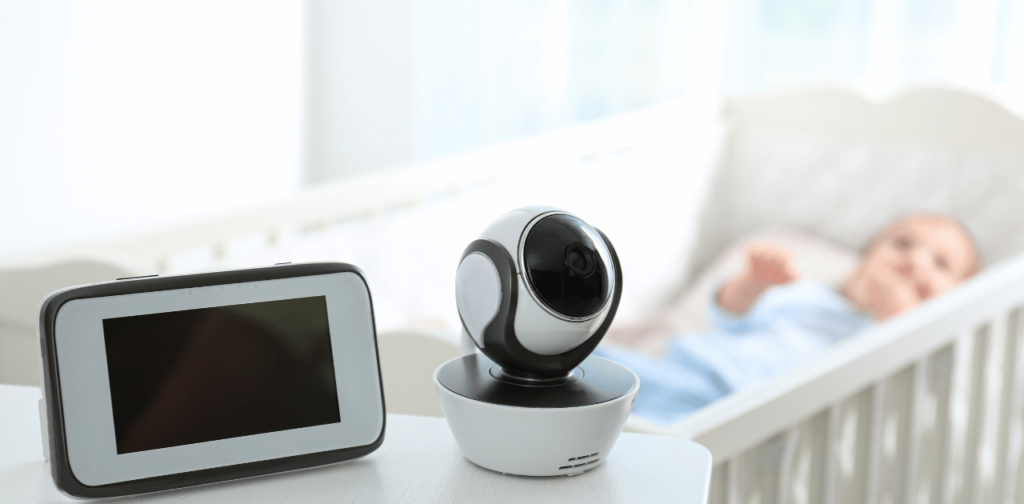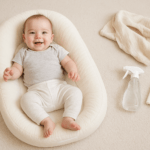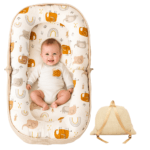Are you curious about what happens in your baby’s room when you’re not there? In the modern world of parenting, baby monitors have evolved from simple audio devices to sophisticated gadgets offering a range of functionalities. Among the most discussed features is their ability to record. This capability raises important questions for parents: How does this feature work? Is it a necessary tool for monitoring your child, or does it edge toward being an invasion of privacy?
In this article, we’ll delve into the world of baby monitors, focusing on their recording capacities. We’ll explore the various types available, how they manage recordings, and the implications for privacy and security.
What Are Baby Monitors?
Baby monitors are essential tools in the modern parenting arsenal, designed to keep an eye (and ear) on infants while they sleep or play in a different room. At their core, these devices serve as a communication link between a baby and their caregivers, providing peace of mind by alerting parents to cries, movements, or any signs of distress.
The primary function of a baby monitor is simple:
To transmit sound and, in many cases, video from the baby’s room to a receiver unit. This lets parents hear when a baby wakes up or needs attention, even if they are in another part of the house or garden. Some advanced models also monitor room temperature, have built-in lullabies, or even track the baby’s breathing and movements.
There are several types of baby monitors, each catering to different needs and preferences:
- Audio Monitors: The most basic type, transmitting only sound from the baby’s room.
- Video Monitors: These include a live video feed camera, often with night vision capabilities.
- Wi-Fi Monitors: Connect to the internet, allowing parents to view the feed from their smartphones or computers, even when away from home.
- Movement Monitors: Equipped with special sensors to alert parents if the baby hasn’t moved for a set period.
Recording Capabilities of Baby Monitors
The recording capabilities of baby monitors have significantly advanced, offering both video and audio recording options. These features not only help in real-time monitoring but also in reviewing past activities.
Video Recording:
Modern baby monitors come with the ability to record high-quality video. This feature is invaluable for parents who want to observe their baby’s movements, sleeping positions, and overall well-being when they are not in the room. Some models even offer night vision for clear footage in low-light conditions.
Audio Recording:
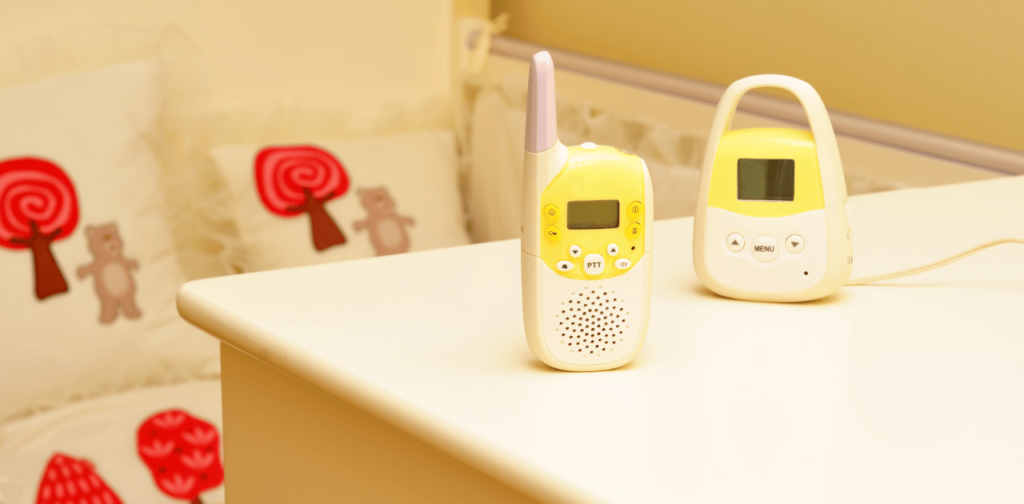
Alongside the video, these devices can record sounds from the baby’s room. This is particularly helpful for analyzing sleep patterns or identifying different cries and needs.
Benefits of Recording in Baby Monitors:
- Monitoring Sleep Patterns: Parents can gain insights into their baby’s sleep patterns and habits by reviewing recorded video and audio. This information can be crucial in adjusting bedtime routines and ensuring a healthy sleep environment.
- Reviewing Baby’s Safety: Recordings can be reviewed to ensure the baby’s environment remains safe and secure. It also allows parents to monitor interactions with other caregivers or siblings.
Privacy Concerns with Recording Features
The integration of recording features in baby monitors raises significant privacy concerns. With these devices capturing sensitive audio and video from a child’s room, there’s a risk of unauthorized access and misuse of this data. Primary concerns include the potential for hackers to gain access to the live feed or stored recordings and abuse of recordings by individuals with access to the device. Parents should prioritize monitors with robust security features to mitigate these risks and be cautious about how and where they use these devices.
Data Security
In the context of baby monitors with recording capabilities, data security is a crucial concern. It involves safeguarding the transmission and storage of sensitive audio and video data. Manufacturers address this by implementing encrypted connections for Wi-Fi-enabled monitors and secure cloud storage. Users, on their part, should ensure strong passwords, update firmware regularly, and maintain secure home networks to prevent unauthorized access and protect their family’s privacy.
Legal Implications
The legal implications of using baby monitors with recording capabilities are significant. In some jurisdictions, recording audio without consent is illegal, while video recording might be subject to different regulations. This becomes especially pertinent in settings like daycare centers. Users must be aware of and comply with local laws regarding recording and privacy to avoid legal issues.
How Do Baby Monitors Work?
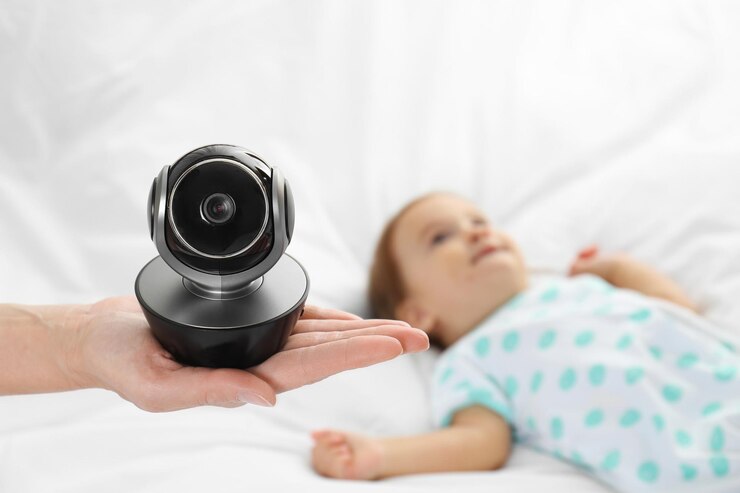
Baby monitors function as a system of transmitting audio and video signals from a baby’s room to a parent unit. Basic models work like a simple radio system, transmitting sound from a microphone in the baby’s room to a receiver. More advanced models incorporate video cameras and connect to Wi-Fi, enabling parents to monitor their baby through a smartphone app, even outside the home. The technology has evolved to include temperature monitoring, motion detection, and even baby breathing tracking.
Technology Behind Baby Monitors

The technology behind baby monitors has evolved from primary audio transmitters to sophisticated devices incorporating video, internet connectivity, and IoT (Internet of Things) functionality. Audio monitors use radio frequencies to transmit sound, while video monitors use digital signals for more explicit images and reduced interference. Wi-Fi-enabled monitors connect to the internet, offering remote access via smartphones. Some modern monitors also include sensor technology to monitor a baby’s movements, breathing, and room conditions.
Connectivity and Range
Connectivity and range are vital factors in the effectiveness of baby monitors. Traditional audio monitors use radio frequencies with a limited range, suitable for smaller homes. Video and Wi-Fi monitors, however, can connect over more considerable distances, with Wi-Fi monitors capable of providing access from virtually anywhere with an internet connection. Parents must choose a monitor with a range and connectivity that suits their home layout and lifestyle needs.
Smart Baby Monitors: The Next Generation
Smart baby monitors represent the next generation in child monitoring technology. These advanced devices do more than transmit sound and video; they connect to the internet and integrate with other smart devices in the home. Features like motion and sound alerts, temperature monitoring, and air quality assessment are standard. Some smart monitors can learn and adapt to a baby’s sleep patterns, providing insights and analytics to parents. These devices often have dedicated smartphone apps for remote monitoring and control, offering parents greater flexibility and peace of mind. Integrating AI technology enables features like unusual movement or cry detection, adding an extra layer of security. However, with these advancements come concerns about data privacy and security, making it crucial for parents to choose devices from reputable manufacturers with robust security protocols.
Integration with Smart Home Devices
Integrating baby monitors with smart home devices has opened a new realm of convenience and functionality for parents. Smart baby monitors can now interact with smart thermostats, lights, or speakers. This integration allows for automated adjustments in the baby’s room, like changing the temperature or dimming lights when the baby falls asleep. Parents can also receive alerts on their smartwatches or TVs, ensuring they’re informed no matter where they are in the home. Some models work with voice assistants like Alexa or Google Assistant, allowing hands-free operation. This seamless integration enhances the baby monitor’s functionality and embeds it more deeply into the smart home ecosystem.
Advanced Features
Advanced features in modern baby monitors have revolutionized how parents monitor their children. Beyond standard video and audio, these devices offer pan and tilt cameras, zoom functions, and even two-way audio to communicate with the baby. High-definition video quality ensures clear images, while infrared night vision allows for monitoring in low-light conditions. Wi-Fi connectivity facilitates remote monitoring via smartphones, and some monitors even offer multi-camera support, allowing parents to monitor multiple rooms simultaneously. Advanced health monitoring features include tracking the baby’s breathing, heart rate, and movement, providing an extra layer of reassurance. While these features enhance convenience and safety, they also necessitate a greater focus on security and privacy considerations.
Common Misconceptions About Baby Monitors
There are several misconceptions about baby monitors that can mislead or confuse parents. One common myth is that all baby monitors are prone to hacking, which isn’t always true. While security risks exist, especially in Wi-Fi-enabled devices, many modern monitors have strong encryption and security protocols. Another misconception is that more features always mean better monitoring. In reality, the best monitor depends on individual needs and home environments. Some believe audio monitors are outdated, but they remain a reliable and simple solution for many. Additionally, the idea that baby monitors can replace direct supervision is dangerous; they are intended to be an aid, not a substitute for parental attention and care.
Choosing the Right Baby Monitor for Your Needs
Choosing the right baby monitor involves considering various factors to find the one that best suits your needs. Range and connectivity are crucial, especially in larger homes or where there are multiple floors. Consider whether a Wi-Fi-enabled monitor for remote viewing or a more straightforward audio-only device is more suitable. Video quality is essential for clear visuals, and night vision capabilities are necessary for overnight monitoring. Think about additional features like temperature sensors, lullabies, and two-way audio. It’s also important to consider the monitor’s battery life and portability, especially if you move around the house frequently. Finally, ensure the monitor meets safety standards and has robust security features, particularly for Wi-Fi-enabled devices.
Installation and Setup Tips
Proper installation and setup ensure your baby monitor works effectively and safely. Start by choosing the right location for the camera, ideally where it gives a clear view of the crib without being within reach of the baby. Ensure the camera angle covers the desired area and test the monitor’s range throughout your home. Secure your home network for Wi-Fi monitors and use strong, unique passwords. Follow the manufacturer’s instructions carefully during setup, and consider any wall-mounting or cord management options to keep cords out of reach. Regularly test the monitor to ensure it’s functioning correctly and be familiar with its various features and alerts.
Best Practices
When using a baby monitor, there are several best practices to ensure safety and optimal performance. Keep the monitor and cords out of the baby’s reach to avoid safety hazards. Regularly test the battery life and signal strength, especially in different areas of your home. If using a Wi-Fi monitor, keep your home network secure and periodically update passwords. Be cautious of over-reliance on the monitor; while it’s a valuable tool, it doesn’t replace physical checks and supervision. Finally, respect privacy, especially if the monitor has recording capabilities, and be mindful of where and how recordings are stored and used.
Maintaining Your Baby Monitor
Maintaining your baby monitor is essential for its longevity and effectiveness. Regularly clean the device with a soft, dry cloth, avoiding harsh chemicals. Ensure the camera lens is clean for clear video quality. Check and replace batteries as needed or ensure charging cables are in good condition. Keep the software updated for monitors connected to Wi-Fi to provide the latest security features and improvements. Check the monitor’s components, like the camera and receiver, for any signs of wear and tear. Proper maintenance not only extends the life of the monitor but also ensures it functions safely and reliably.
Future Trends in Baby Monitoring Technology
The future of baby monitoring technology is poised for innovative developments. We expect to see more integration with smart home systems and further AI and machine learning advancements for more intelligent alerts and analytics. Wearable technology for babies that monitor vital signs and sleep patterns will likely become more common. Augmented reality for more interactive monitoring experiences and virtual assistants integrated into baby monitors could also be on the horizon. Additionally, there will be a stronger emphasis on data privacy and security as these devices become more connected and intelligent. These advancements will give parents more comprehensive and sophisticated tools for monitoring and ensuring their child’s well-being.
Conclusion:
In conclusion, baby monitors have evolved significantly, transforming from simple audio tools into sophisticated devices enriched with features like video recording, Wi-Fi connectivity, and integration with smart home systems. As we’ve explored, modern baby monitors offer advanced functionalities such as high-definition video, remote monitoring, and even health-tracking features, making them invaluable tools for today’s parents.
FAQs
Can baby monitors be hacked?
- Yes, particularly Wi-Fi-enabled monitors. To minimize risks, use strong, unique passwords, secure your home network, and regularly update the monitor’s firmware.
Are video baby monitors better than audio-only monitors?
- It depends on your needs. Video monitors offer visual monitoring, which can be reassuring, but audio-only monitors are generally more affordable and have a longer battery life.
Do baby monitors interfere with Wi-Fi or other household electronics?
- Some older models might, but most modern baby monitors use frequencies that minimize interference. Wi-Fi monitors use your home network and shouldn’t cause interference.
How far can baby monitor signals reach?
- The range varies by model. Audio monitors typically range up to 1,000 feet, while Wi-Fi monitors can be accessed remotely from anywhere with an internet connection.
Can I use my smartphone as a baby monitor?
- Yes, apps are available that convert smartphones or tablets into baby monitors. However, they may offer a different range or reliability than dedicated baby monitors.
Are there any health risks associated with baby monitors?
- There are no proven health risks, but keeping monitors at least a few feet away from the baby is recommended to minimize exposure to any emissions.
